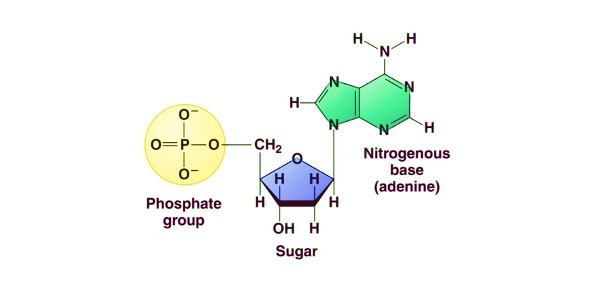Table of Contents
Flow Cytometry Definition
Flow cytometry is a technique for analysing cell properties. A laser and fluorescently tagged proteins can be used to assess cell size, health, and phenotype.
Individual proteins can be monitored using flow cytometry since it is so precise. As a result, we can examine the inner workings and signalling networks of a cell.
Flow Cytometry: All You Need To Know
Flow cytometry works on the same premise whether it uses laser light or electrical impedance (an electronic measure of current opposition in an AC circuit). Cells are suspended in a stream of fluid and passed through an exciting light focus one at a time.
The emitted light will scatter into various wavelengths that are read by an electronic detector because the proteins or cell components of interest have been fluorescently tagged with antibodies.
The dispersed light is then converted into quantifiable physical and chemical characteristics of the particles in the fluid. Flow cytometry’s capacity to analyse cells and their components has earned it a place as a vital biological tool.
Flow Cytometry Protocol
While laboratories all around the globe are working to improve flow cytometry protocols, they usually consist of the following steps:
1. Formaldehyde is used to immobilise the proteins of interest and their transitory signalling events in cells.
2. Methanol or detergent are added to the test tube to render the cells permeable to antibodies, allowing antibodies to access their intracellular regions.
3. Fluorescently tagged antibodies are added, and they must be carefully chosen to provide optimum epitope targeting and antigen detection while staining numerous surface and intracellular proteins at the same time.
4. The test tube is put in the flow cytometer, and one cell at a time, the fluid is permitted to enter – and then depart – the flow chamber.
5. The light that bounces off each cell as it traverses the laser beam is sent to light/color detectors.
6. After the data from this experiment has been analysed, the unique characteristics of the cells and their cell signalling patterns may be discovered.
Antibody staining can also be different:
1. Direct staining involves incubating cells with an antibody that has been directly coupled to a fluorochrome (e.g., FITC). This is a one-step incubation technique that works well for intracellular staining.
2. In indirect staining, the primary antibody is not labelled, but a fluorochrome-labeled secondary antibody is used to detect it. This technique allows researchers to produce unconjugated primary antibodies against a wide range of targets, expanding their target protein options.
3. A stain of intracellular antigens is referred to as intracellular staining.
4. Finally, a Golgi block can be used to tag and track proteins produced by a cell, followed by intracellular labelling.
Flow Cytometry Test
Flow cytometry offers a wide range of applications. In its most basic form, it can count cells as they pass through the laser beam. By comparing the light signals that cells produce to established cell shape and gene expression patterns, flow cytometry can select cells from heterogeneous mixtures.
There’s a lot to say about the particles that are emitted. The size, granularity, and fluorescence intensity of a particle may all be determined using flow cytometry. It can also be used to detect biomarkers that are essential in illness research.
In fact, by combining several cell-type specific markers with phosphorylated-epitopes, we may gain a unique perspective on signalling biomarkers in cell mixtures. Cell tracking, cell cycle and apoptosis (“cell death”), phenotyping, and signal transduction are some of the more basic applications of flow cytometry.
Decoding signalling patterns has therapeutic implications as well. Normal patterns can disclose how medicines operate, while finding abnormalities in normal signalling might explain how a disease progresses. Flow cytometry may now play one of the most significant roles in diagnostic.
Flow Cytometry Analysis
In pathology, flow cytometry has become something of a gold standard. It has been employed in a variety of disciplines, including marine research and plant biology, but it is best known for its clinical uses in cancer, immunodeficiency diseases, and prenatal diagnosis.
In today’s cancer research, flow cytometry is critical. By staining for specific surface antigens, flow cytometry helps us to distinguish between various cancer cell types in lymph nodes, bone marrow, and blood samples obtained from a patient.
Flow cytometry, for example, is frequently used to diagnose lymphoma. By measuring the amount of light-reactive DNA found in cancer cells, this tool can also assess the risk of recurrence of bladder, breast, and prostate cancers.
This is an obvious lifeline for the millions of cancer survivors who go into remission each year. Its diagnostic capabilities for primary immunodeficiency (PI) disorders are equally impressive.
PI diseases are a category of uncommon, chronic illnesses that impair a patient’s immune system’s ability to fight infections. These infections are recurrent and can affect the skin, lungs, throat, brain, gastrointestinal, and urinary systems of patients.
While there are numerous procedures to diagnose PI problems, flow cytometry is an important element of the initial workup and subsequent therapy.
Overall, flow cytometry’s many uses make it a very promising tool, and it is expected to play a significant role in everyday hospital and clinic visits for many years to come.
Flow Cytometry Citations
- Flow cytometry: basic principles and applications. Crit Rev Biotechnol . 2017 Mar;37(2):163-176.
- Spectral flow cytometry. Curr Protoc Cytom . 2013 Jan;Chapter 1:Unit1.27.
- Flow cytometry: an introduction. Methods Mol Biol . 2011;699:1-29.
- Flow Cytometry: An Overview. Curr Protoc Immunol . 2018 Feb 21;120:5.1.1-5.1.11.







